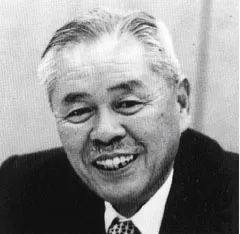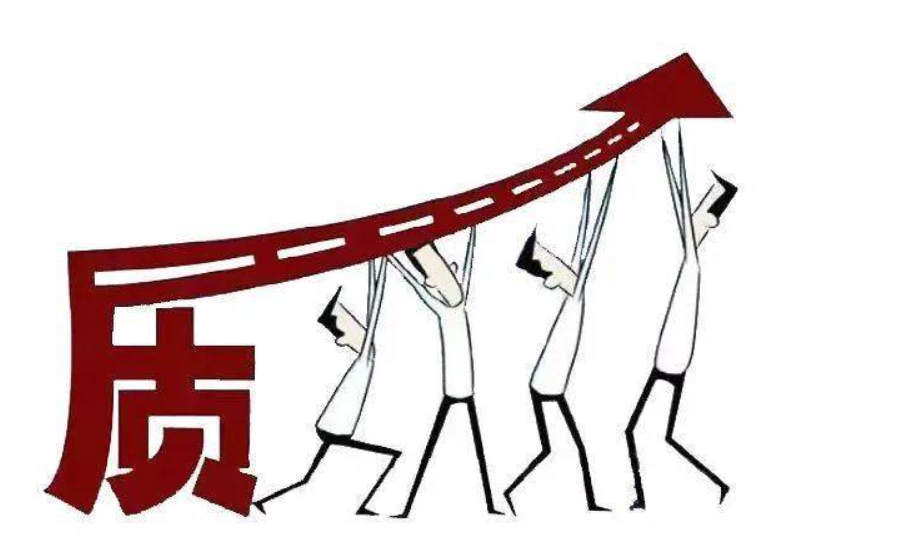为什么应该专注于资产负债表来增加收益?(上篇)
Lean practitioners understand that focusing on this financial statement is the best way to achieve higher sales and lower costs.
精益从业者深知,专注于财务报表是实现更高销售额和更低成本目标的最佳方式。

This advice might sound a little goofy — and won’t make any sense — to the traditional business leader who runs a batch company. Conventional business
leaders believe the balance sheet has nothing to do with earnings, is based on the nature of your business or industry, and cannot be materially changed. They
believe that you will grow earnings by growing sales and lowering costs and that, by successfully doing this, the balance sheet will take care of itself.
对于经营大批量生产的传统企业的领导者来说,这种想法可能听起来有点愚蠢,也没有任何意义。传统企业领导者认为,资产负债表与收益无关,它是基于企业或行业性质,且不会有实质性的改变。他们认为,如果你能够成功做到——通过扩大销售和降低成本来增加收益,资产负债表就不会出现问题。

The lean-thinking leader sees this (like so many other things) from a completely different perspective. While they acknowledge that growing sales and lowering costs lead to
higher earnings, they understand that the best way to achieve this is by focusing on the balance sheet.
拥有精益思维的领导者从一个完全不同的角度看待资产负债表(就像许多其他事情一样)。虽然他们承认,扩大销售和降低成本会带来更高的收益,但他们深知,实现这一目标的最佳方式是专注于资产负债表。
This logic comes from the lean principle that removing waste from all processes delivers more value to the customer. While waste can and does occur in every
process, the accumulated total shows up most clearly on the balance sheet, which is where waste goes to die. Once you understand this formula, you will focus on
the balance sheet to grow earnings.
这一逻辑来源于精益原则,即从所有流程中消除浪费,为客户提供更多价值。虽然浪费能够并且确实发生在每个流程中,但其累积的总量在资产负债表上表现得最为清楚,这是消除浪费的地方。一旦你理解这一准则,你就会专注于资产负债表,以此来增加收入。
Two key measurements can drive most strategies derived from lean thinking:
1. Customer service
2. Inventory turns
有两个关键指标可以推动源自精益思想的大多数战略:
1. 客户服务
2. 库存周转率
Both measures support the idea of growing sales and lowering costs to drive earnings. However, over time, the company with 100% on-time customer service will always take market share from the company that scores 95% to 96% customer service. Achieving this critical goal will also prod everyone
to deliver more value to customers, which is the primary consideration of every decision made by a lean practitioner.
这两个指标都适用于通过增加销售额和降低成本以增加收益的策略。随着时间的推移,拥有100%准时客户服务的公司总是从那些只有95%至96%准时客户服务的公司手中抢占市场份额。实现这一关键目标还将激发每个员工为客户提供更多价值,这是精益从业者在做出每一个决策时会首要考虑的因素。
Similarly, a company with higher inventory turns will offer better customer service at a lower cost than a competitor with lower inventory turns, enabling it
to grab market share. So, while inventory is a balance sheet item, the lean-thinking leader recognizes it as a key to earnings growth. Why?
同样,库存周转率较高的公司将比库存周转率较低的竞争对手以更低的成本提供更好的客户服务,从而使其能够抢占市场份额。因此,虽然库存是一个资产负债表项目,但拥有精益思维的领导者认为它是盈利增长的关键。为什么会这么认为?

大野耐一先生
The traditional business leader sees inventory as a necessary evil, enabling the company to provide better customer service, thinking, “You can’t sell from
an empty wagon.” In contrast, lean-thinking leaders see inventory as “the root of all evil,” the No. 1 item in Taiichi Ohno’s list of seven wastes. They understand that excess inventory hides all
the other types of waste and is created “just in case,” the opposite of “just in time.”
传统公司的领导者将库存视为一种必要的浪费,为了使得公司能够为客户提供更好的服务,他们认为“你不能从一辆空车上销售。”相比之下,具有精益思维的领导者将库存视为“万恶之源”,库存是大野耐一先生(Taichi Ohno)七大浪费中排在最前面的第一大浪费。他们认为,过剩的库存隐藏了所有其他类型的浪费,是“以防万一”产生的,与准时制相悖。
Managing Inventory 库存管理
Let’s explore this by comparing inventory turns at two companies. Company A turns inventory 3x, and Company B turns inventory 20x. Which one has
lower costs? Shorter lead times? Better quality? Customer service?
让我们通过比较两家公司的库存周转率来探讨这一点。公司A一年库存周转3回,公司B一年库存翻20回。哪个有着更低的成本,更短的交付周期,更好的质量,更好的客户服务?

While these are not trick questions, traditional managers might struggle with the correct answer. That’s because they might be happy with 3x inventory
turns and would consider the idea of 20x inventory turns so impossible that they would dismiss it out of hand.
这些问题都真实存在,但传统的管理者可能很难找到正确的答案。这是因为他们可能会对3回的库存周转率感到满意,并认为20回库存周转率是一个不可能实现的目标,因此他们会立即放弃这个想法。
The correct answer becomes apparent when you understand everything that must change to reduce inventory from 3x to 20x turns. You cannot make this
happen overnight. You must remove quite a lot of waste from every process to get to 20x turns.
当你懂得为了把库存从3回减少到20回而必须改变的一切时,正确的答案就变得显而易见了。你不可能一蹴而就,你必须从每道工序中消除大量的浪费才能达到20回库存周转率的目标。
To do so, start with setup reduction: tackle the two- to three-hour setup times on most of the equipment that forces you to produce in big batches, driving up inventory. If you reduce your setup times to the single digit
(less than 10 minutes), your batch sizes will decrease, and your inventory will drop.
要做到这一点,首先要减少设备换型时间:消除大多数设备的两到三个小时的换型时间,长时间的设备安装调试时间迫使你大量生产,增加库存。如果你将设备换型时间减少到个位数(小于10分钟,即常说的单分钟换产),批量将减少,库存也将下降。

Moving from batch to flow will also reduce inventory as you approach the lean ideal of “sell one, make one.” Along with setup reduction, flow production
will reduce your lead times from six to eight weeks to one to two days, dramatically improving your ability to deliver value to your customers, gain market share,
and boost your sales growth. Every time your competitor with a six-to eight-week lead time stumbles, your two-day lead time will allow you to gain market share at book price.
当你接近“卖一个,做一个”的精益目标时,从批量生产到物流都会减少库存。随着设备换型时间的减少,流动生产将使你的交付周期从六到八周缩短至一到两天,从而显著提高向客户提供价值、获得市场份额和促进销售增长的能力。每当竞争对手的交付周期是六到八周时,而你的交付周期是两天时,将使你以账面价格获得市场份额。
Creating flow and a value-stream-focused organization will not only lower your inventory but will also lower your costs and improve your quality. In my experience, it is common to see a 10x
improvement in quality by moving away from batch production to flow production.
创建流动和一个以价值流为中心的组织不仅会降低库存,还会降低成本,提高质量。根据我的经验,从批量生产转向流动生产,质量通常会提高10倍。

When you have all the production steps in line with a short lead time, every time a quality problem occurs, you will understand all the reasons it happened
and develop a permanent solution. Moving to flow from batch production will also lower your costs. It is common to see a reduction in the number of required
operators by more than 50%.
当你在很短的交付周期内完成所有生产步骤时,每次出现质量问题你都能知道发生问题的所有原因,并制定出长期解决方案。从批量生产转向流动生产也会降低成本,通常可看到所需操作员数量减少了50%以上。
Removing excess inventory will force you to figure out how to live without this crutch and reduce even more waste, further improving production and customer
service. You will no longer live with unplanned machine downtime. You will need to develop close relationships with your suppliers to ensure they can keep up
with your daily deliveries. You will no longer tolerate defects.
去除多余的库存将迫使您弄清楚如何在没有这个拐杖的情况下生活,减少更多的浪费,进一步改善生产和客户服务;你将不再有计划外的机器停机;你需要与供应商建立密切的关系,以确保他们能够跟上你的日常交付;你将不再容忍缺陷。
And, as you remove inventory, you will free up space. The lean company with 20x inventory turns will typically require 50% less space than the competitor who
turns it 3x — another significant cost reduction that will occur by focusing on inventory turns, i.e., your balance sheet.
而且,当你去掉库存时,你会释放出空间。拥有20轮库存周转率的精益公司通常需要的空间比拥有3轮库存周转率的竞争对手少50%,这是通过关注库存周转率(即资产负债表),从另一方面使成本显著降低。
作者:Art Byrne
原文链接:
https://www.lean.org/the-lean-post/articles/ask-art-why-should-i-focus-on-my-balance-sheet-to-grow-earnings/
译者:李兆华,李威,肖燕
发表时间:2022年12月28日


.jpg)
.png)